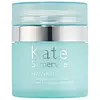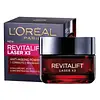What's inside
What's inside
 Key Ingredients
Key Ingredients

 Benefits
Benefits

 Concerns
Concerns

 Ingredients Side-by-side
Ingredients Side-by-side

Water
Skin ConditioningDimethicone
EmollientGlycerin
HumectantPropanediol
SolventDiphenylsiloxy Phenyl Trimethicone
Skin ConditioningGlyceryl Glucoside
HumectantDimethicone/PEG-10/15 Crosspolymer
Spirulina Maxima Extract
SmoothingPalmitoyl Tetrapeptide-7
Skin ConditioningRosmarinus Officinalis Leaf Extract
AntimicrobialCalendula Officinalis Flower Extract
MaskingTocopheryl Acetate
AntioxidantTocopherol
AntioxidantHydrolyzed Hyaluronic Acid
HumectantEthylhexylglycerin
Skin ConditioningPolysilicone-11
Lecithin
EmollientChrysin
Skin ConditioningLauryl PEG-9 Polydimethylsiloxyethyl Dimethicone
Skin ConditioningSodium Chloride
MaskingDisteardimonium Hectorite
StabilisingSucrose
HumectantSodium Citrate
BufferingParfum
Masking1,2-Hexanediol
Skin ConditioningTriethyl Citrate
MaskingDipropylene Glycol
HumectantPentylene Glycol
Skin ConditioningDisodium EDTA
Phenoxyethanol
PreservativeLinalool
PerfumingLimonene
PerfumingWater, Dimethicone, Glycerin, Propanediol, Diphenylsiloxy Phenyl Trimethicone, Glyceryl Glucoside, Dimethicone/PEG-10/15 Crosspolymer, Spirulina Maxima Extract, Palmitoyl Tetrapeptide-7, Rosmarinus Officinalis Leaf Extract, Calendula Officinalis Flower Extract, Tocopheryl Acetate, Tocopherol, Hydrolyzed Hyaluronic Acid, Ethylhexylglycerin, Polysilicone-11, Lecithin, Chrysin, Lauryl PEG-9 Polydimethylsiloxyethyl Dimethicone, Sodium Chloride, Disteardimonium Hectorite, Sucrose, Sodium Citrate, Parfum, 1,2-Hexanediol, Triethyl Citrate, Dipropylene Glycol, Pentylene Glycol, Disodium EDTA, Phenoxyethanol, Linalool, Limonene
Water
Skin ConditioningGlycerin
HumectantIsohexadecane
EmollientHydroxypropyl Tetrahydropyrantriol
Skin ConditioningDimethicone
EmollientIsopropyl Isostearate
EmollientAluminum Starch Octenylsuccinate
AbsorbentPropylene Glycol
HumectantNylon-12
Octyldodecanol
EmollientCetyl Alcohol
EmollientBehenyl Alcohol
EmollientAmmonium Polyacryloyldimethyl Taurate
Emulsion StabilisingC13-14 Isoparaffin
EmollientPEG-100 Stearate
Stearic Acid
CleansingStearyl Alcohol
EmollientTriethanolamine
BufferingCetearyl Alcohol
EmollientCetearyl Glucoside
EmulsifyingMyristic Acid
CleansingMyristyl Alcohol
EmollientPalmitic Acid
EmollientAdenosine
Skin ConditioningDisodium EDTA
Disodium Stearoyl Glutamate
CleansingHydrolyzed Hyaluronic Acid
HumectantCapryloyl Salicylic Acid
ExfoliatingLaureth-7
EmulsifyingT-Butyl Alcohol
PerfumingPolyacrylamide
Polyethylene
AbrasiveMethylparaben
PreservativePhenoxyethanol
PreservativeCI 15985
Cosmetic ColorantCI 19140
Cosmetic ColorantLinalool
PerfumingIsoeugenol
PerfumingLimonene
PerfumingCitronellol
PerfumingBenzyl Alcohol
PerfumingParfum
MaskingWater, Glycerin, Isohexadecane, Hydroxypropyl Tetrahydropyrantriol, Dimethicone, Isopropyl Isostearate, Aluminum Starch Octenylsuccinate, Propylene Glycol, Nylon-12, Octyldodecanol, Cetyl Alcohol, Behenyl Alcohol, Ammonium Polyacryloyldimethyl Taurate, C13-14 Isoparaffin, PEG-100 Stearate, Stearic Acid, Stearyl Alcohol, Triethanolamine, Cetearyl Alcohol, Cetearyl Glucoside, Myristic Acid, Myristyl Alcohol, Palmitic Acid, Adenosine, Disodium EDTA, Disodium Stearoyl Glutamate, Hydrolyzed Hyaluronic Acid, Capryloyl Salicylic Acid, Laureth-7, T-Butyl Alcohol, Polyacrylamide, Polyethylene, Methylparaben, Phenoxyethanol, CI 15985, CI 19140, Linalool, Isoeugenol, Limonene, Citronellol, Benzyl Alcohol, Parfum
Ingredients Explained
These ingredients are found in both products.
Ingredients higher up in an ingredient list are typically present in a larger amount.
Dimethicone is a type of synthetic silicone created from natural materials such as quartz.
What it does:
Dimethicone comes in different viscosities:
Depending on the viscosity, dimethicone has different properties.
Ingredients lists don't always show which type is used, so we recommend reaching out to the brand if you have questions about the viscosity.
This ingredient is unlikely to cause irritation because it does not get absorbed into skin. However, people with silicone allergies should be careful about using this ingredient.
Note: Dimethicone may contribute to pilling. This is because it is not oil or water soluble, so pilling may occur when layered with products. When mixed with heavy oils in a formula, the outcome is also quite greasy.
Learn more about DimethiconeDisodium EDTA plays a role in making products more stable by aiding other preservatives.
It is a chelating agent, meaning it neutralizes metal ions that may be found in a product.
Disodium EDTA is a salt of edetic acid and is found to be safe in cosmetic ingredients.
Learn more about Disodium EDTAGlycerin is already naturally found in your skin. It helps moisturize and protect your skin.
A study from 2016 found glycerin to be more effective as a humectant than AHAs and hyaluronic acid.
As a humectant, it helps the skin stay hydrated by pulling moisture to your skin. The low molecular weight of glycerin allows it to pull moisture into the deeper layers of your skin.
Hydrated skin improves your skin barrier; Your skin barrier helps protect against irritants and bacteria.
Glycerin has also been found to have antimicrobial and antiviral properties. Due to these properties, glycerin is often used in wound and burn treatments.
In cosmetics, glycerin is usually derived from plants such as soybean or palm. However, it can also be sourced from animals, such as tallow or animal fat.
This ingredient is organic, colorless, odorless, and non-toxic.
Glycerin is the name for this ingredient in American English. British English uses Glycerol/Glycerine.
Learn more about GlycerinHydrolyzed Hyaluronic Acid is a form of hyaluronic acid. It is created by the hydrolysis of hyaluronic acid with a high molecular weight. Once created, Hydrolyzed Hyaluronic Acid has a low molecular weight.
Low molecular weight HA has been shown to hydrate and increase elasticity of the skin. Increasing elasticity is also associated with reduction of wrinkle depth.
One study found topical low molecular weight hyaluronic acid may be considered for the treatment of rosacea in the adult population. However, we always recommend speaking with a professional about your skin concerns.
Hyaluronic acids are a humectant. This means they draw moisture from the air. Hyaluronic acids help moisturize, soothe, and protect the skin.
Read more about other common forms of hyaluronic acid:
Learn more about Hydrolyzed Hyaluronic AcidLimonene is a fragrance that adds scent and taste to a formulation.
It's found in the peel oil of citrus fruits and other plants such as lavender and eucalyptus. The scent of limonene is generally described as "sweet citrus".
Limonene acts as an antioxidant, meaning it helps neutralize free radicals.
When exposed to air, oxidized limonene may sensitize the skin. Because of this, limonene is often avoided by people with sensitive skin.
The term 'fragrance' is not regulated in many countries. In many cases, it is up to the brand to define this term. For instance, many brands choose to label themselves as "fragrance-free" because they are not using synthetic fragrances. However, their products may still contain ingredients such as essential oils that are considered a fragrance.
Learn more about LimoneneLinalool is a fragrance and helps add scent to products. It's derived from common plants such as cinnamon, mint, citrus, and lavender.
Like Limonene, this ingredient oxidizes when exposed to air. Oxidized linalool can cause allergies and skin sensitivity.
This ingredient has a scent that is floral, spicy tropical, and citrus-like.
Learn more about LinaloolParfum is a catch-all term for an ingredient or more that is used to give a scent to products.
Also called "fragrance", this ingredient can be a blend of hundreds of chemicals or plant oils. This means every product with "fragrance" or "parfum" in the ingredients list is a different mixture.
For instance, Habanolide is a proprietary trade name for a specific aroma chemical. When used as a fragrance ingredient in cosmetics, most aroma chemicals fall under the broad labeling category of “FRAGRANCE” or “PARFUM” according to EU and US regulations.
The term 'parfum' or 'fragrance' is not regulated in many countries. In many cases, it is up to the brand to define this term.
For instance, many brands choose to label themselves as "fragrance-free" because they are not using synthetic fragrances. However, their products may still contain ingredients such as essential oils that are considered a fragrance by INCI standards.
One example is Calendula flower extract. Calendula is an essential oil that still imparts a scent or 'fragrance'.
Depending on the blend, the ingredients in the mixture can cause allergies and sensitivities on the skin. Some ingredients that are known EU allergens include linalool and citronellol.
Parfum can also be used to mask or cover an unpleasant scent.
The bottom line is: not all fragrances/parfum/ingredients are created equally. If you are worried about fragrances, we recommend taking a closer look at an ingredient. And of course, we always recommend speaking with a professional.
Learn more about ParfumPhenoxyethanol is a preservative that has germicide, antimicrobial, and aromatic properties. Studies show that phenoxyethanol can prevent microbial growth. By itself, it has a scent that is similar to that of a rose.
It's often used in formulations along with Caprylyl Glycol to preserve the shelf life of products.
Water. It's the most common cosmetic ingredient of all. You'll usually see it at the top of ingredient lists, meaning that it makes up the largest part of the product.
So why is it so popular? Water most often acts as a solvent - this means that it helps dissolve other ingredients into the formulation.
You'll also recognize water as that liquid we all need to stay alive. If you see this, drink a glass of water. Stay hydrated!
Learn more about Water